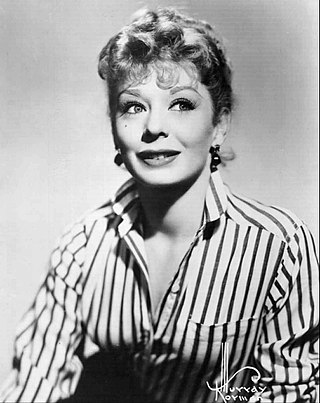
Gwyneth Evelyn "Gwen" Verdon was an American actress and dancer. She won four Tony Awards for her musical comedy performances, and she served as an uncredited choreographer's assistant and specialty dance coach for theater and film. Verdon was a critically acclaimed performer on Broadway in the 1950s, 1960s, and 1970s, having originated many roles in musicals, including Lola in Damn Yankees, the title character in Sweet Charity and Roxie Hart in Chicago.
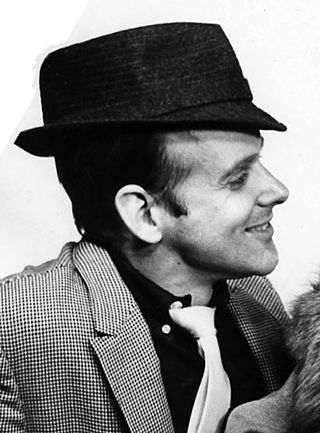
Robert Louis Fosse was an American actor, choreographer, dancer, and film and stage director. He directed and choreographed musical works on stage and screen, including the stage musicals The Pajama Game (1954), Damn Yankees (1955), How to Succeed in Business Without Really Trying (1961), Sweet Charity (1966), Pippin (1972), and Chicago (1975). He directed the films Sweet Charity (1969), Cabaret (1972), Lenny (1974), All That Jazz (1979), and Star 80 (1983).

Elizabeth Ruth Grable was an American actress, pin-up girl, dancer, model and singer.

How to Marry a Millionaire is a 1953 American screwball comedy film directed by Jean Negulesco and written and produced by Nunnally Johnson. The screenplay was based on the plays The Greeks Had a Word for It (1930) by Zoe Akins and Loco (1946) by Dale Eunson and Katherine Albert.

June Haver was an American film actress, singer and dancer. Once groomed by 20th Century Fox to be "the next Betty Grable," Haver appeared in a string of musicals, but she never achieved Grable's popularity. Haver's second husband was the actor Fred MacMurray, whom she married after she retired from showbusiness.

Rory Calhoun was an American film and television actor. He starred in numerous Westerns in the 1950s and 1960s, and appeared in supporting roles in films such as How to Marry a Millionaire (1953).

Moon Over Miami is a 1941 American musical film directed by Walter Lang, with Betty Grable and Don Ameche in leading roles and co-starring Robert Cummings, Carole Landis, Jack Haley, and Charlotte Greenwood. It was adapted from the play by Stephen Powys. The original movie was a 1938 film directed by William A Seiter titled Three Blind Mice starring Loretta Young, Joel McCrea and David Niven

Jack Cole was an American dancer, choreographer, and theatre director known as "the Father of Theatrical Jazz Dance" for his role in codifying African-American jazz dance styles, as influenced by the dance traditions of other cultures, for Broadway and Hollywood. Asked to describe his style he described it as "urban folk dance".

Down Argentine Way is a 1940 American musical film made in Technicolor by Twentieth Century Fox. It made a star of Betty Grable in her first leading role for the studio although she had already appeared in 31 films, and it introduced American audiences to Carmen Miranda. It also starred Don Ameche, The Nicholas Brothers, Charlotte Greenwood, and J. Carrol Naish.
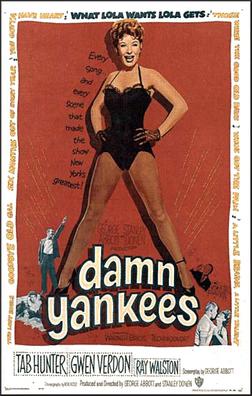
Damn Yankees is a 1958 American widescreen musical sports romantic comedy film. It was directed by George Abbott and Stanley Donen from a screenplay by Abbott, adapted from his and Douglass Wallop's book of the 1955 musical of the same name, itself based on the 1954 novel The Year the Yankees Lost the Pennant by Wallop. The story line is a take on the Faust legend and centers on the New York Yankees and Washington Senators baseball teams. With the exception of Tab Hunter in the role of Joe Hardy, the Broadway principals reprise their stage roles, including Gwen Verdon as Lola.

Three for the Show is a 1955 Technicolor and in CinemaScope musical comedy remake of Too Many Husbands. It stars actress Betty Grable, in her last musical, opposite Jack Lemmon, Gower Champion and Marge Champion. It is based on the 1919 play Home and Beauty by W. Somerset Maugham, which was retitled to Too Many Husbands when it came to New York.

Mother Wore Tights is a 1947 American Technicolor musical film starring Betty Grable and Dan Dailey as married vaudeville performers, directed by Walter Lang.

Tin Pan Alley is a 1940 musical film directed by Walter Lang and starring Alice Faye and Betty Grable as vaudeville singers/sisters and John Payne and Jack Oakie as songwriters in the years before World War I.

Pin Up Girl is a 1944 American Technicolor musical romantic comedy motion picture starring Betty Grable, John Harvey, Martha Raye, and Joe E. Brown.

The Shocking Miss Pilgrim is a 1947 American musical comedy film in Technicolor written and directed by George Seaton and starring Betty Grable and Dick Haymes.

Wabash Avenue is a 1950 American musical film directed by Henry Koster and starring Betty Grable. The film was a remake of Grable's earlier hit 1943 film Coney Island.

My Blue Heaven is a 1950 American drama musical film directed by Henry Koster and starring Betty Grable and Dan Dailey.
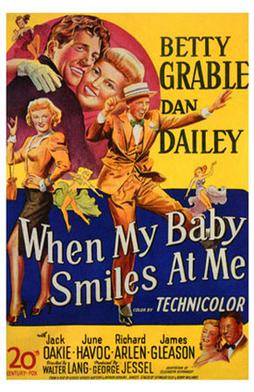
When My Baby Smiles at Me is a 1948 American musical film directed by Walter Lang and starring Betty Grable and Dan Dailey. Released by 20th Century Fox, it is the third film based on the popular 1927 Broadway play Burlesque, the others being The Dance of Life (1929) and Swing High, Swing Low (1937). When My Baby Smiles at Me is the first full Technicolor film version of that play; The Dance of Life had several Technicolor sequences, but they are no longer extant.

Something for the Boys is a 1944 musical comedy film directed by Lewis Seiler. It stars Carmen Miranda, with Michael O'Shea, Vivian Blaine, Phil Silvers, Sheila Ryan and Perry Como.
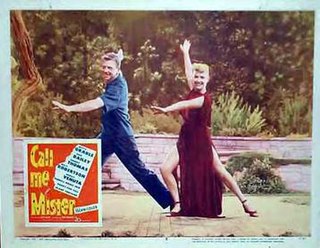
Call Me Mister is a 1951 American Technicolor musical film released by Twentieth Century-Fox. The feature was directed by Lloyd Bacon and re-written from the 1946 Broadway play version by Albert E. Lewin and Burt Styler with music by Harold Rome that featured cast members from the US armed forces.



















